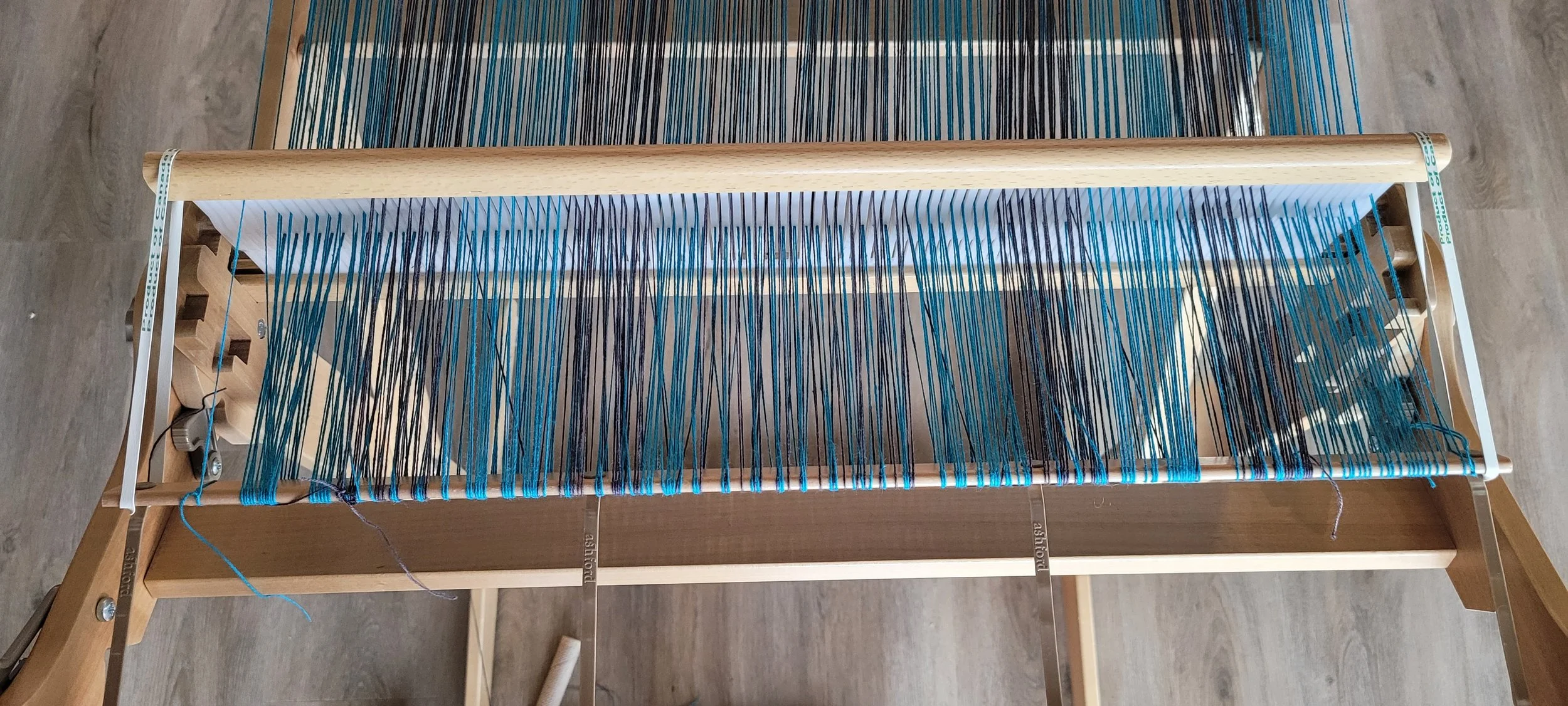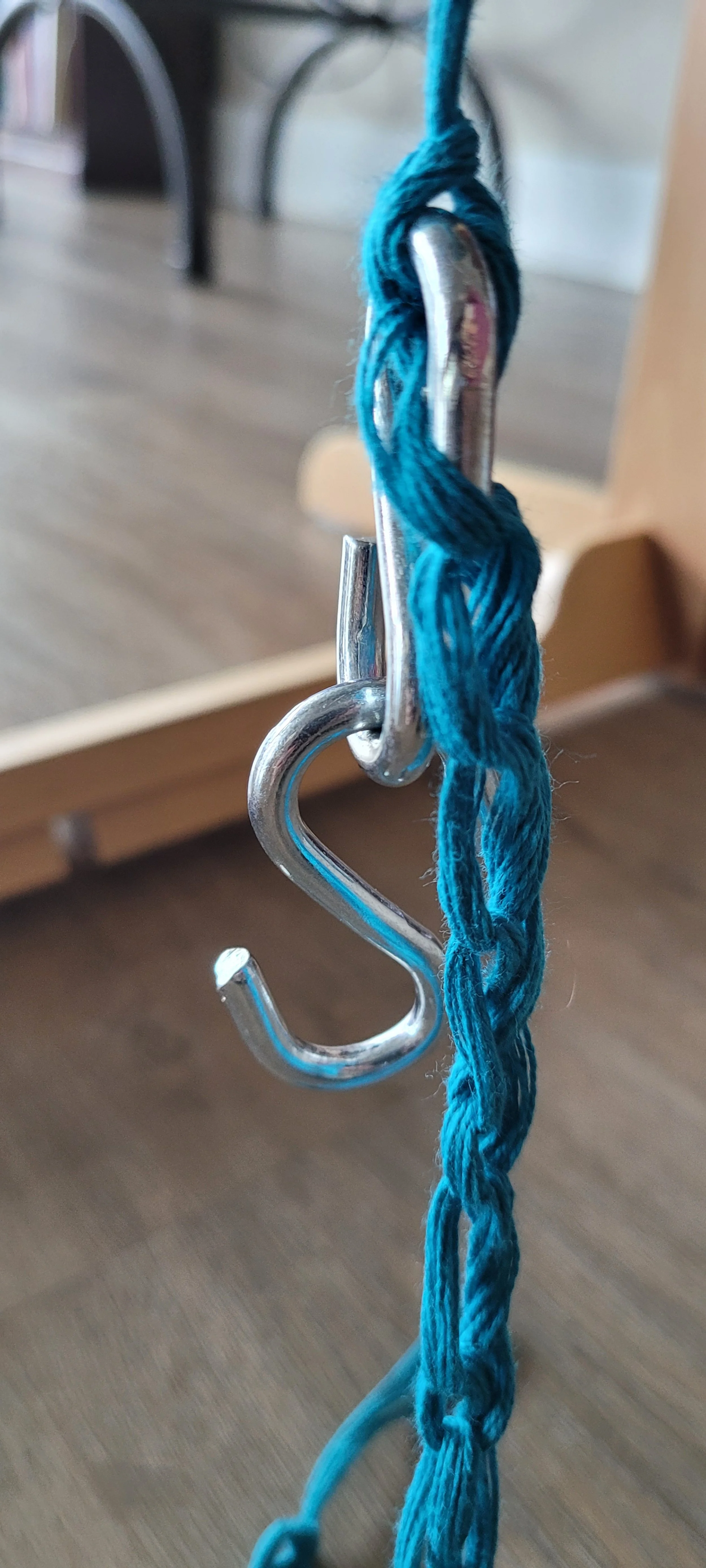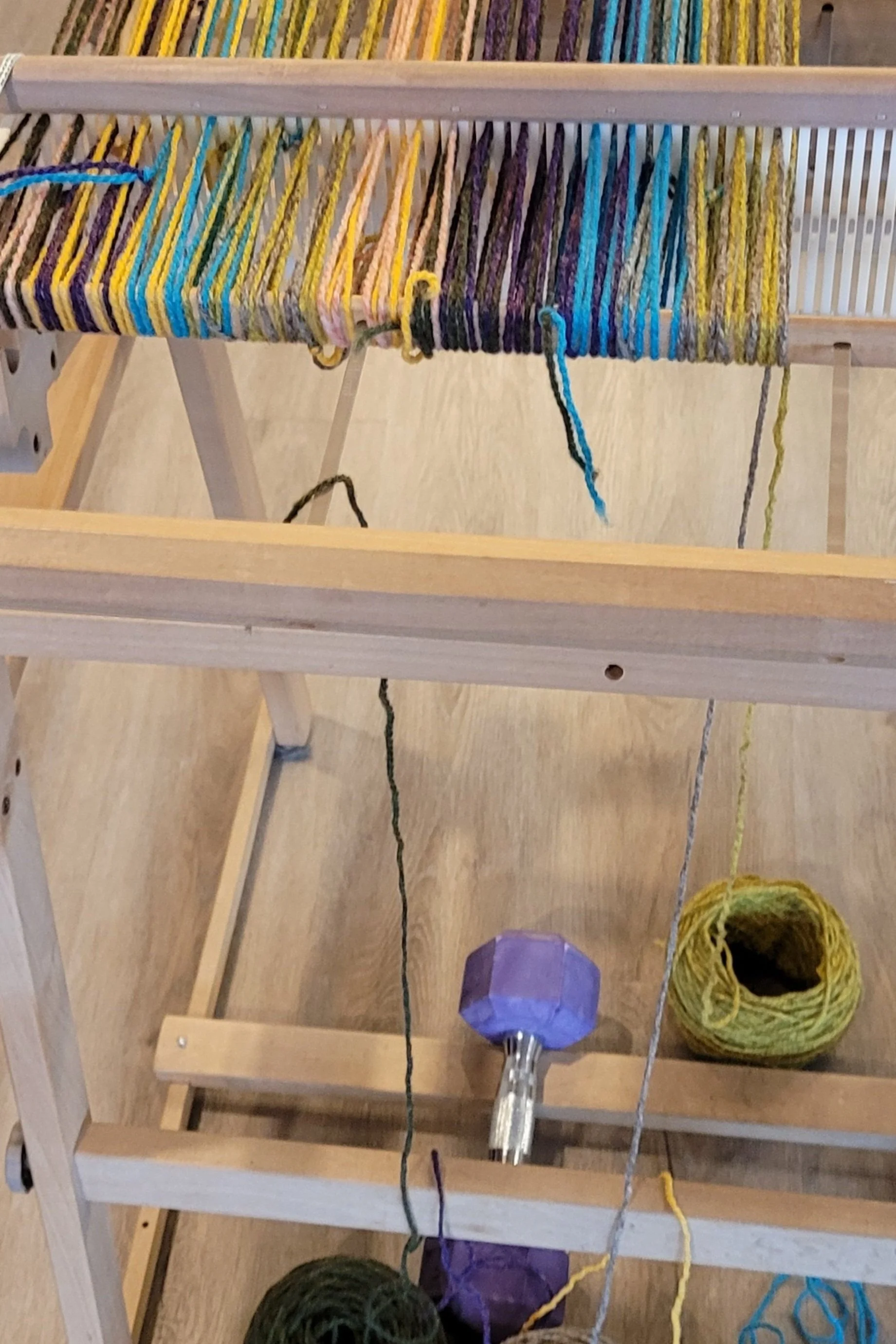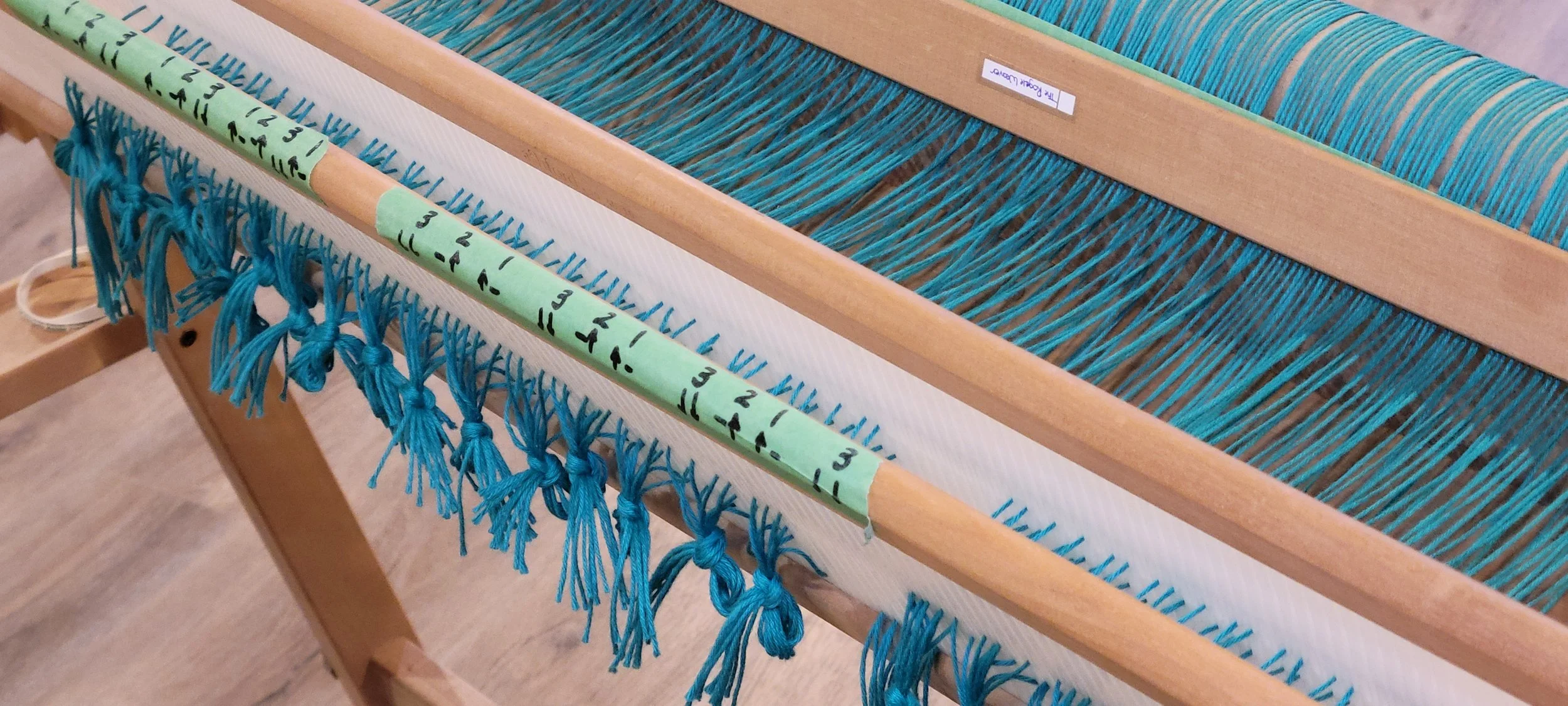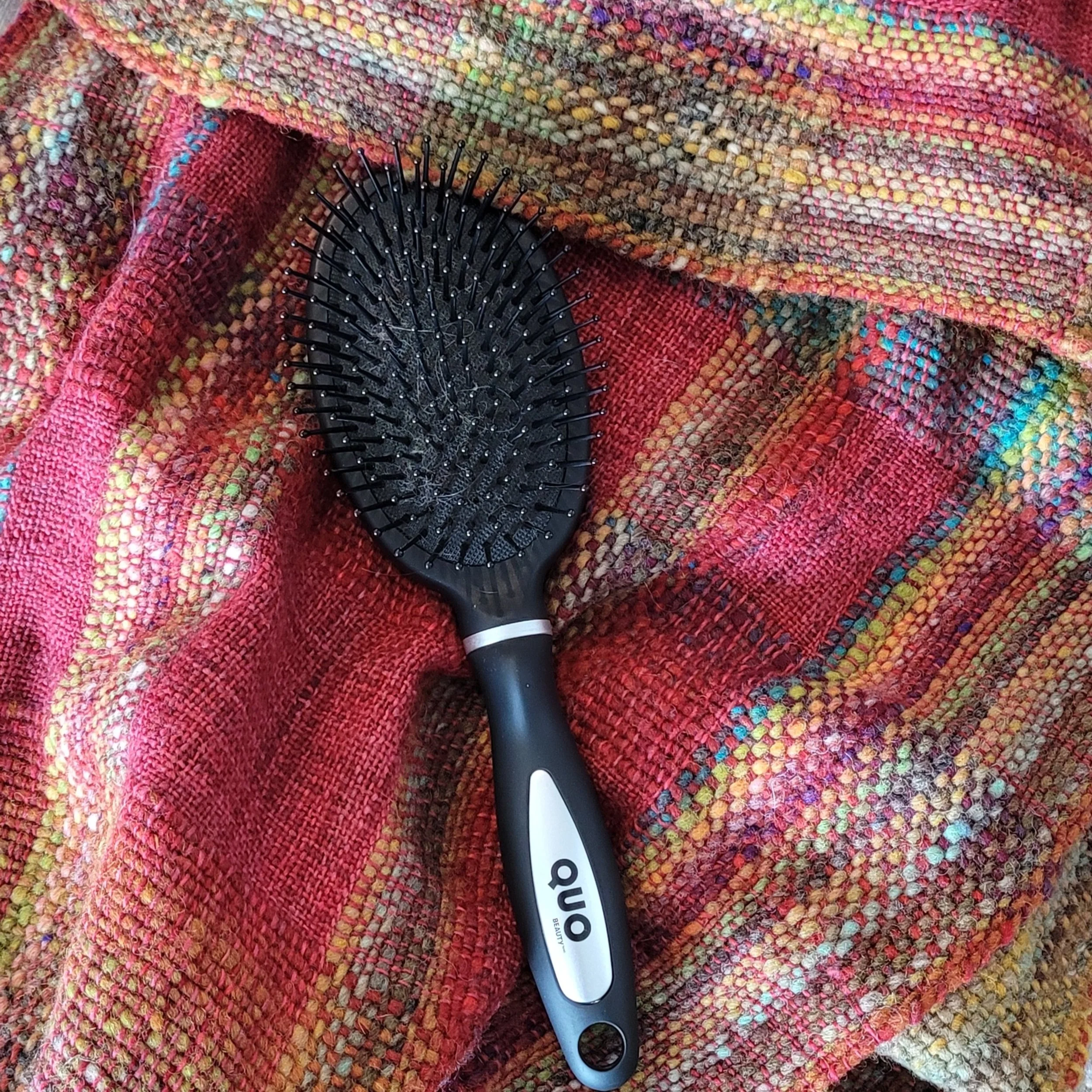9 Tools You Need To Add to Your Weaving Kit
One of the best things about crafty people is how we make do with what we have. This means rooting through our junk drawers, craft supplies and even the tool chest to find just the right tool to accomplish the job. Today we’re going to look at some of my favourite everyday tools that I use weaving.
Elastic Bands
You know how when you direct warp everything looks great when you start, but when you keep warping the first ends start to sag? As you begin to warp, the back warping stick is pulled by the warp towards the reed. But only by 1 pair of ends. Its isn’t very firm. However, as you add more warp, the stick has more and more pressure added so it pulled more toward the reed. This causes the beginning of the warp to sag. It isn’t really a problem, particularly if you use the crank and yank method of winding or a tensioning devise. But if you like a neat tidy look or walking your loom to the pegs, you might want too eliminate the sag. And it’s such an easy fix!! All you need are 2 elastic bands. The elastics from asparagus are perfect and you might have them in your junk drawer. Simply stretch one from the back warping stick to the reed on each end. Just remember to take them off before you start winding!
2. S-Hooks and Metal Washers
No matter how careful I am to keep my tension even, I still have the occasional warp end that is just a little bit looser than the rest. Or I’ve caught my shuttle on it and pulled it loose. Or I missed a slot and needed to add extra warp after winding. Or the pattern makes some ends looser. Or just because a tighter end slot makes for a neater selvedge. You can never have too many S-hooks. I use 2” S-hooks, they seem to be heavy enough to use with out needing any extra weight. Smaller ones may need metal washers for extra weight. S-hooks are my favourite weights because they slip onto the warp so easily and do not need adjusting when winding forward.
3. Weights
I use 5-7lb barbells, but heavy books, bags of Flour, Rice, Kitty Litter or any other heavy thing will work. If you direct warp using a stand and you have a wider loom (24-32”) you may notice that the loom slides when you do a wide warp. Weights on the cross bar of the stand will prevent this. If you are warping to a chair or stool, you may want to weight it as well.
4. Camera
Your phone camera can be your best friend (or your worst enemy) when weaving. In fact, this deserves a whole post on its own, but here’s a few of the ways you can use your camera. Take pictures of the beginning of your work…paying special attention to the yarn, including the labels and colourway, reed size and how you began the weave (hemstitch, how many ends, how long a hem before starting the pattern). Take pictures of the placement of the pick-up sticks. Take pictures of colour changes and at what measurement they happened at. Also take pictures as you weave…the camera will point out mistakes that your eye has missed!
5. Electric Drill and Chopstick
I love using boat shuttles with my rigid heddle. Boat shuttles are particularly useful of you have a small space to weave in. However, boat shuttles means winding bobbins. I use my electic drill to wind bobbins, For regular bobbins I use a drill bit with paper wrapped around it and taped to be sure the bobbins fits snugly. I have a chop stick that fits my Handywoman bobbin perfectly. You can also get a dowel from a hardware store. (Make sure to bring your bobbins with you)
6. Spring Wood Clamps
I love these clamps! They work for clamping your loom and your peg and I think they are easier to use and stronger than the clamps that come with the loom. I clamp my warping pegs to a counter, stool or chair. If I want to take my loom off the stand to warp, I can use the clamps to firmly clamp it to a counter or table.
7. Painter’s Tape and a Magic Marker
I use painters tape a lot! And a magic marker works best for writing on it. Here’s just a few of the ways I use the tape: labeling my pick-up sticks, writing the pick-up pattern on the stick, writing the warping pattern on my reed, writing my weaving pattern on the reed. If you have to rethread to a different reed, pull the warp tight and lay a piece of tape across the warp behind the reed. When you take the reed off, all the threads will be kept in order for easy threading of the new reed. Finally, preventing string heddle from falling of a stick or dowel.
8. Bees Wax Candle
I expect any candle, or even a bar of soap would work. But I like bees wax candles. They smell nice and are naturel. My Ashford loom can be a little squeaky. And sometimes the reed seems to stick in the heddle block a bit. A little rub of wax makes everything move more smoothly and quietly.
9. Hair brush
Yup, a regular old hair brush! I use it to brush out my fringe before trimming and twisting.
So, these are some of my favourite non-weaving weaving tools. Do you have some favourite tools?
Also, don’t forget to sign up for my newsletter so you can keep up to date on the latest patterns and blog posts.

